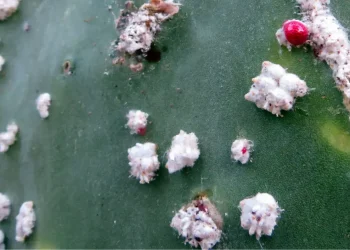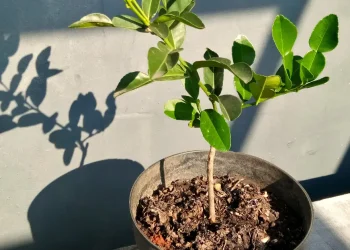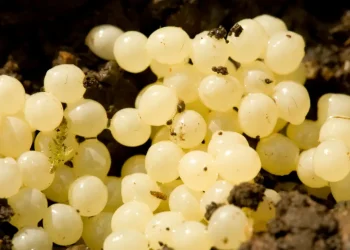Coleus is very easy to care for. It is a forgiving plant ideal for casual indoor gardeners. It can tolerate colder temperatures and even the darker corner of your room, which is not getting enough sunlight for other plants to grow in. However, this colorful foliage plant roots quickly in water.
If you have found yourself reading this article, you probably have overwatered your coleus plant and are wondering if it’s too late to save it.
An overwatered coleus plant will start showing signs of distress in a matter of days to a couple of weeks. These signs include leaf discoloration or the presence of fungi in the soil or on other parts of the plant. If there is extensive damage, you’ll need to repot your coleus to fresh soil and ensure that, this time, the perfect conditions are met.
In this article, we’ll take a look at the most common signs of overwatered coleus and how such a plant can be treated for complete recovery. Let’s get started!
Signs of Overwatered Coleus
The commonly seen signs of overwatered coleus are leaf problems like yellowing or, ultimately, dropping or thin, powdery layer of fungi on the surface of the soil or plant.
There’re many telltale signs of overwatering in your coleus plants. These signs serve as early indicators that something might be amiss, as they will usually show very early, it is enough if the plant stands in water for a few days.
In the next few sections, I’ll break down these signs step by step, giving you a clear understanding of what to look for and how to address each symptom effectively.
1. Leaf Issues
One of the most noticeable signs of overwatering in coleus plants is the appearance of leaves themselves. It’s also the first sign that will likely show up.
Although coleus is really colorful plant and leaf’s color can highly vary, if you are overwatering your coleus, the leaves will typically become yellow or develop brown spots. If your coleus has naturally yellow leaves, their color will slowly fade to more pale yellow.
The leaves may also begin to curl and wither and eventually fall off completely.
2. Presence of Fungi
When your coleus plants receive more water than they can handle, it creates a hospitable environment for fungal growth. The excess moisture creates a perfect breeding ground for various fungi, including powdery mildew and root rot.
If you’ve noticed a white, powdery substance on the leaves or stems of your coleus, that’s a clear sign of powdery mildew, a common fungal issue triggered by overwatering. Additionally, if you observe the roots turning brown, mushy, or emitting a foul smell, it’s likely that your coleus is suffering from root rot, another fungal infection brought about by waterlogged soil.
In both these cases, it’s best to repot your coleus.
When you repot your coleus, you have the opportunity to replace the waterlogged soil with fresh, well-draining soil. This change can create an environment that is less conducive to fungal growth. Although simply repotting may not completely eliminate the fungal presence, it won’t be able to spread and will eventually die off completely.
3. Mushy Stem
Another clear indicator of overwatering in coleus plants is a mushy stem. When the stem feels soft, squishy, or appears discolored, it’s a signal that excess moisture is taking a toll on the plant’s structural integrity.
Overwatering can compromise the plant’s ability to transport nutrients. As the soil becomes compacted really closely to the roots, there’s not much space left for oxygen to flow and for the plant to take the nutrients from the soil, which can lead to this mushiness.
This can closely tie in with the presence of fungal pathogens we discussed in the previous section. And again, the only truly effective solution is to repot your plant.
4. Stunted Growth
Coleus plants are fast-growing, with some varieties as fast as 2 to 3 inches per week, With proper care, they can grow up to 36 inches high in just one season. Because of that, it’s fairly easy to notice if the growth rate starts to slow down.
Excess moisture in the soil can restrict the plant’s ability to absorb nutrients effectively, leading to a slowdown in growth. Stunted growth often presents as smaller, underdeveloped leaves and a general lack of vigor in the plant’s overall appearance.
Stunted or slowed growth is not solely tied to overwatering. It can be caused by a number of other causes, from sunburn to pest infestation. But in all cases, when you notice stunted growth, you should investigate what is going on with your coleus.
How to Save Overwatered Coleus?
Now that you’re armed with a solid understanding of the signs of overwatering in coleus plants, it’s time to roll up your sleeves and take action.
First, you’ll need to analyze how bad the condition of your plant is. If the plant was just shortly overwatered and hasn’t developed root rot yet, it will be enough to just leave it to dry completely before watering again. However, if the damage is more serious and overwatering has damaged the roots, we’ll need to go through a combination of steps in order to fully restore your coleus to its vibrant self.
Step 1. Remove Coleus from the Soil
The first step in rescuing your overwatered coleus, when the damage is extensive, involves gently removing it from the waterlogged soil.
Simply letting the soil dry out won’t do the magic. The moist environment that contributed to root rot could persist even after the soil dries out, continuing to provide a conducive setting for fungal growth. This can perpetuate the cycle of damage and hinder your coleus’s chances of rebounding.
Gently loose the soil around the base and pull the plant from its container.
Step 2. Wash the Root Ball
When you are annually repotting your plants, you are used to not moving the roots too much. That prevents damage and helps the plant root faster in the new soil. However, this doesn’t apply here.
Once the plant has been removed, run the roots under water or gently clean them in a water bucket. Gently washing the root ball helps remove any remaining soggy soil, fungal spores, and decayed root material that might be contributing to the plant’s distress. Additionally, trim all seemingly very damaged roots.
After washing, let the root ball air dry for a short period before proceeding with repotting.
Step 3. Choose a Suitable Potting Mix and Repot your Coleus
After washing the root ball and removing any damaged roots, the next step in rescuing your overwatered coleus is to select a new pot and fresh, well-draining potting mix.
- Choose a suitable pot. Opt for a slightly larger pot than the one your coleus was previously in. The new pot should have drainage holes to prevent water from pooling at the bottom.
- Select a potting mix. Choose a high-quality, well-draining potting mix appropriate for your coleus. Look for mixes that are labeled for indoor plants or container gardening. Avoid heavy or moisture-retaining mixes – like the one for cacti and succulents – that might contribute to future overwatering issues.
- Fill the pot. Fill the pot with the chosen potting mix up to a level that will allow the coleus’s root ball to sit at roughly the same depth as it was in the previous pot. To better the draining properties of the soil, you can place a layer of small stones or pottery shards at the bottom of the pot.
- Place the Coleus inside the pot. Gently place the washed and trimmed root ball into the new pot, making sure it’s centered and at the desired depth.
- Fill the gaps. Fill in the gaps around the root ball with the potting mix, gently pressing it down to secure the plant.
Water the pot thoroughly to make the soil and the roots settle in. Then move it to a place with plenty of indirect sunlight.
Step 4. Remove Affected Leaves
With your coleus freshly repotted in a well-draining mix, it’s time to address the visible effects of overwatering by removing any affected leaves. I like to do it in this order because before you dig your plant up, you can’t be sure if the damage is not too far for a rescue.
Using clean and sterilized pruning shears, carefully trim away the leaves that show signs of distress. This means leaves that are all faded out, show extensive signs of browning, or are otherwise ill in any way.
This not only improves the plant’s overall appearance but also redirects its energy to other parts that are worth recovering at this point.
How often to Water Coleus?
The only true way to prevent overwatering and all the signs of it is to establish the right watering routine.
Coleus plants prefer soil that is constantly moist, which can be tricky and can very easily lead to overwatering. So how much and how often does coleus need water?
As a general guideline, water your coleus when the top inch of the soil feels dry to the touch. Insert your finger into the soil up to the first knuckle – if it feels dry at that depth, it’s time to water.
However, keep in mind that the frequency of ideal watering can change. During the active growing season, which typically spans spring and summer, you may find yourself watering more frequently to accommodate the plant’s increased need for moisture. In contrast, during the cooler months of fall and winter, when growth slows down, you’ll likely need to water less often.
It also depends on the size of the pot, type of the potting mix, humidity levels, and other factors.
One last thing to keep in mind. Underwatering is always better than overwatering. Don’t stress out if you miss your standard watering day, and especially do not make up for it by pouring more water on your coleus.
Conclusion
It’s always simpler to avoid overwatering your coleus than to solve it afterward.
There are quite a few signs that will give away that your plant is overwatered. The one that you can always see is the yellowing of the leaves or brown spots on them.
If you act fast enough, simply putting the pot in a sunny place to fully dry out may be sufficient. However, if your coleus is extensively damaged, fully repotting the plant is your best choice.












